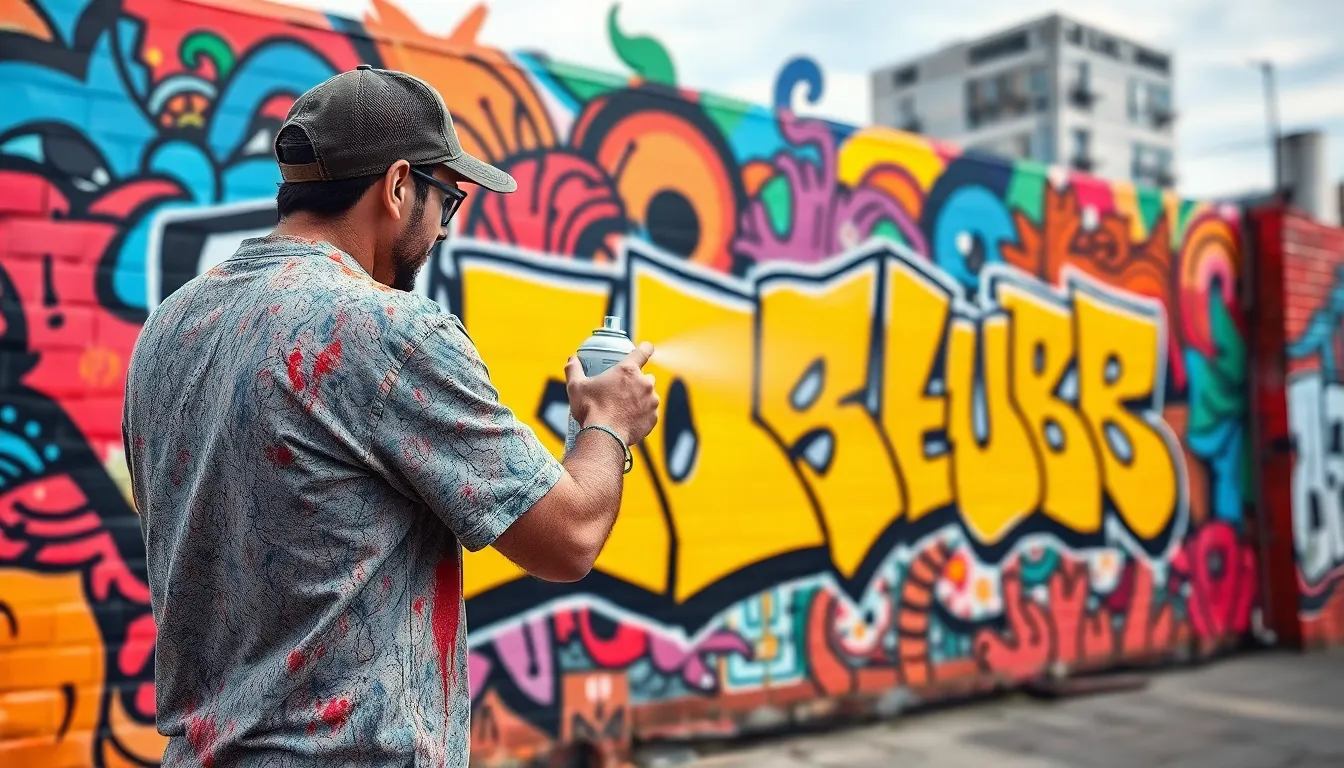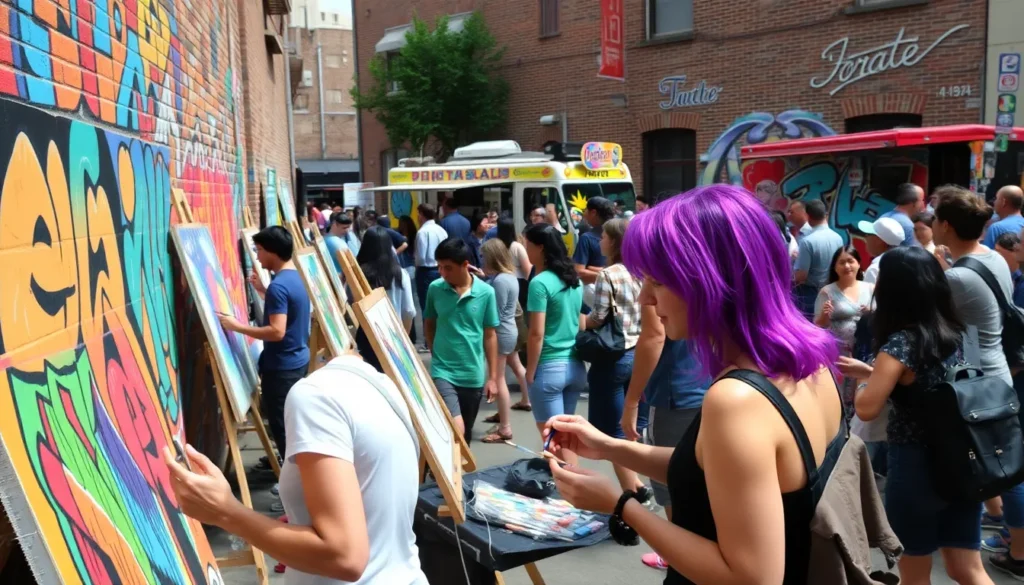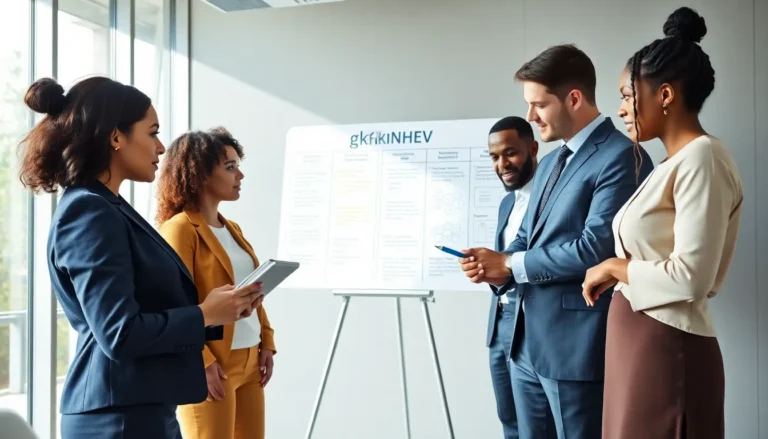When vibrant colors collide with urban landscapes, magic happens. Street art and graffiti festivals transform dull walls into breathtaking canvases, showcasing the creativity of talented artists from around the globe. These events aren’t just a feast for the eyes; they’re a celebration of culture, community, and self-expression.
Table of Contents
ToggleOverview of Street Art and Graffiti Festivals
Street art and graffiti festivals celebrate creativity and self-expression, transforming urban environments. These events attract local and international artists, showcasing varied styles like murals, stencil art, and installations. Enthusiasts often find inspiration from the vibrant displays that emerge during these gatherings.
Artists collaborate in live painting sessions, encouraging interaction with the public. Visitors engage directly with the creative process, witnessing the evolution of art firsthand. Local communities benefit from these festivals, fostering a sense of pride and ownership in public spaces.
Economic impacts also emerge from increased tourism during these events. Festivals generate revenue and promote businesses, such as restaurants and shops. Additionally, they often contribute to ongoing neighborhood revitalization efforts.
Educational components play a significant role in many festivals. Workshops and panels offer insights into techniques, history, and the cultural significance of street art. Participants gain valuable knowledge, enhancing appreciation for this urban art form.
Safety and legality become important discussions at festivals. Many events secure permissions and work with local authorities to ensure safe environments for artists and spectators. Such collaborations enable the celebration of street art while respecting community norms.
Examples of notable festivals include the Wynwood Walls in Miami and the Upfest in Bristol, England. These venues attract thousands of visitors, enhancing local cultural landscapes. Overall, street art and graffiti festivals create dynamic platforms for artistic expression and community engagement.
History of Street Art

Street art has roots that trace back to various movements and times. Its journey began in public spaces, where artists shared their messages beyond traditional galleries.
Origins and Evolution
Street art’s origins date back to the late 1960s and early 1970s, particularly in urban centers like New York City. Graffiti emerged as a form of expression among youth, often carrying political messages. The 1980s saw subway trains becoming canvases, turning these artworks into symbols of rebellion. Over the decades, street art evolved to embrace diverse styles and technologies, moving from illegal tagging to more respected murals and installations. As cities began to recognize its cultural significance, festivals promoting street art gained traction, reshaping urban landscapes and fostering local identity.
Influential Artists
Influential artists have shaped the street art movement significantly. Keith Haring popularized vibrant, bold motifs that engaged with social issues. Banksy emerged as a global icon, merging satire with striking visuals. Jean-Michel Basquiat blended graffiti with fine art, challenging art world norms. Artists like Shepard Fairey utilized stencils to create impactful political commentary. Each of these figures left an indelible mark, inspiring new generations and further legitimizing street art’s place in contemporary culture. Through festivals, their works continue to ignite conversations and inspire creativity worldwide.
Festival Highlights
Street art and graffiti festivals showcase vibrant creativity while uniting communities. These events provide a platform for artists and attendees to engage with art in meaningful ways.
Iconic Locations
Famous areas often host these festivals, transforming urban landscapes into open-air galleries. Notable sites like Wynwood Walls in Miami serve as backdrops for immersive experiences. Bristol’s Upfest capitalizes on its streets, allowing local and visiting artists to leave their mark. Locations provide more than art; they create an atmosphere steeped in history and cultural significance.
Featured Artists
Artists from diverse backgrounds take center stage, bringing unique styles and messages. Renowned names like Banksy and Shepard Fairey often participate, captivating audiences with their thought-provoking artworks. Emerging talents also showcase their creativity, contributing fresh perspectives. Each artist’s work reflects social issues, engaging viewers in conversations that matter.
Activities and Workshops
Interactive sessions enhance the festival experience for participants of all ages. Workshops cover various street art techniques, from spray painting to stencil making. Attendees often enjoy live mural painting sessions, offering firsthand insight into the creative process. Panel discussions allow experts to share knowledge and explore the cultural impact of street art. These activities foster community engagement, enhancing appreciation for the form.
The Impact on Communities
Street art and graffiti festivals profoundly influence communities, enriching urban environments and fostering cultural connections.
Cultural Significance
Artistic expression in urban settings serves as a visual language for communities. These festivals often highlight local stories and histories, encouraging dialogue about social and political issues. Murals and installations transform cityscapes into galleries, making art accessible to all. Through creativity, artists inspire pride among residents and invite tourists to engage with local culture. Notable artworks often reflect the community’s identity and diversity, further enhancing the cultural fabric of neighborhoods. Events like these promote cultural exchange, allowing various artistic styles to thrive in public spaces and encouraging cross-cultural understanding.
Promoting Local Talent
Festivals serve as platforms for emerging and established artists, providing visibility within the community. Aspiring talents often showcase their skills alongside renowned creators, creating opportunities for collaboration and mentorship. Such exposure helps local artists gain recognition beyond their borders, opening doors to future projects. Workshops during festivals allow participants to learn skills directly from industry professionals, cultivating a new generation of artists. Through these platforms, communities reinforce their commitment to fostering creativity and supporting local talent, ensuring a vibrant artistic future. Local businesses benefit as well, drawing in visitors who wish to explore the region’s creative scene.
Challenges and Controversies
Street art and graffiti festivals face various challenges and controversies that can impact their success and acceptance. Legal issues often arise, as many artworks originate from unsanctioned public spaces.
Legal Issues
Local governments may view street art as vandalism, leading to potential legal consequences for artists. Enforcement of anti-graffiti laws complicates the work of legal street artists. Some festivals seek permits, which can limit creative freedom. Regulations regarding copyright and ownership also create disputes among artists, particularly when their work is altered or removed without consent. Collaboration with local authorities becomes essential to navigate these legal landscapes and promote a mutually beneficial relationship.
Public Perception
Public perception remains mixed regarding street art and graffiti. Some view it as a valuable form of self-expression that enhances urban environments. Others associate it with crime and neglect, leading to calls for stricter regulations. Community attitudes can influence a festival’s success. Positive media coverage may shift perceptions, highlighting the cultural richness of street art. Engaging the public through interactive elements can foster appreciation while addressing concerns, ultimately bridging divides and promoting broader acceptance.
Street art and graffiti festivals play a crucial role in transforming urban landscapes and fostering community ties. These vibrant events not only beautify cities but also celebrate diverse cultures and artistic expression. By bringing together local and international talent, they create dynamic spaces for interaction and learning.
As these festivals continue to grow, they face challenges that require ongoing dialogue and collaboration with local authorities and communities. Addressing public perception and legal concerns is essential for ensuring the longevity and success of such initiatives. Ultimately, street art and graffiti festivals enrich urban environments, making them more inclusive and reflective of the communities they represent.



